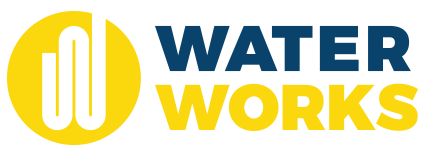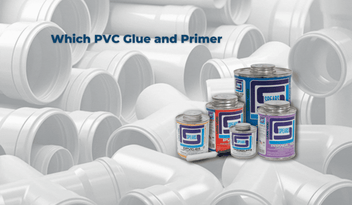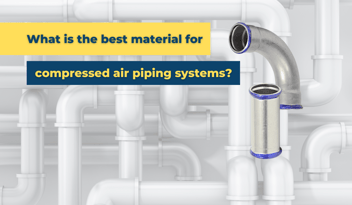UPVC vs CPVC: Which material is ideal for your piping needs?
Piping systems play an important role in residential, commercial, and industrial construction and their comfort and environmental safety, rely on their effectiveness. Over the years, piping systems have evolved to include new materials and techniques for conveying liquids. Initially, it involved the use of concrete channels and relied solely on gravity to move. In modern piping and pumping systems more effective materials such as UPVC and CPVC, have been developed to suit various applications. In this article, we will be discussing the difference between UPVC and CPVC piping systems with the intention of helping you make the right choice for your specific application.
What is CPVC?
CPVC, chlorinated polyvinyl chloride, is a popular material in piping systems. CPVC is obtained through the addition of chlorine to the PVC chemical composition in the presence of heat and UV radiation, a process known as post-chlorination. This improves the chemical resistance and heat tolerance of the material. From the post-chlorination stage, the CPVC resin (the manufactured form of CPVC) is passed through a compounding chamber where additives such as stabilisers and colorants are added. CPVC pipes are created by extrusion while fittings and other products are made by injection molding.
Extrusion
The CPVC resin is fed into an extruder where it is melted and spread out in a uniform thickness. The spread-out resin is moved into a processing system downstream of the extruder where it’s formed into pipes of desired diameter and length. The extrusion process continues as long as the resin is fed into the extruder; making it ideal for the manufacture of pipes of different lengths.
Injection molding
This involves feeding molten CPVC resin into a mold and letting it cool down to give the desired geometry. In this process, parts of a mold are hydraulically clamped together with a provision for injection of molten CPVC resin. Necessary calculations are done to mitigate shrinkage during the cooling of the mold. The injection and cooling processes depend on the quality of the CPVC resin used and the desired specifications of the products created.
Classification of CPVC piping items
Industrial applications vary from one another; piping systems should be well suited for the conditions they are subjected to. CPVC piping systems are classified for different applications depending on pressure, temperature, and compatibility with liquid conveyed. The classification is essential for ensuring safety and integrity of the system and environment in which they are used. For quality regulation, CPVC items are tested at the manufacturing stage to meet specific requirements depending on their classification.
Common Grades of CPVC include:
-
CPVC Sch.40 piping
CPVC Schedule 40, denoted as Sch.40, are designed for low to moderate pressure conditions, and are suited for moderate temperature conditions. Sch.40 piping components are less common in industrial applications due to their thinner wall, however it is sometimes used for low pressure transfer of liquids under 93°C.
-
CPVC Sch.80 piping
Denoted as Sch.80, these CPVC piping components are suitable for hot liquids and chemical transfer. It can sustain up to a temperature of 93°C, however pressure capabilities are de-rated as temperatures increase. Sch.80 piping components are characterised by thicker walls; depending on the manufacturer, they may be color-coded differently from Sch.40. Their resistance to chemical damage makes them a great choice for a variety of industrial chemical applications.
Common CPVC Applications
The improved capabilities of CPVC products make them applicable to a wide range of applications, including:
1. Industrial hot water supply
The improved heat tolerance of CPVC makes it ideal for industrial moderate temperature water supply applications. CPVC piping is sometimes used for water circulation in water-cooled industrial plants where the temperature does not exceed the products temperature rating.
2. Chemical delivery systems
CPVC has good chemical resistance making it suitable for industrial chemical transfer. Caution should be taken when chemicals are mixed, as in this state the combined product can have a different reaction than a chemical on its own. Mixing can also generate heat and increase the products corrosiveness.
3. Fire sprinkler systems
Fire protection is an essential requirement in industrial processing facilities. CPVC can be used for fire protection as it is heat resistant and resistant to external corrosion. It is also burn resistant and has self-extinguishing properties making it less susceptible to fire damage.
What is UPVC?
UPVC, unplasticized polyvinyl chloride, is a product of natural gas and chlorine taken through a series of chemical reactions. The manufacturing of UPVC starts with the separation of Ethylene gas from natural gas, this process is known as thermal cracking. Ethylene gas is moved into a catalytic chamber where it is reacted with chlorine to form Vinyl Chloride Monomer (VCM). VCM is then polymerized - chemically combining small molecules to form larger chains and networks of molecules known as polymers. The polymerised VCM is then mixed with additives for additional properties such as chemical resistance and colour, the final product of the process is PVC resin. Normal PVC resin contains plasticizers which makes them flexible. For UPVC, the final production stage does not include the addition of plasticizers, resulting in a rigid material structure.
UPVC products are created by extrusion and/or injection moulding, the processes are identical to those employed in production of CPVC products. UPVC resins are fed into an extruder where they are heated and formed into pipes of desired diameters and lengths. Fittings are produced by injecting molten UPVC resin into a mold and cooling it to give the desired geometry. The inelasticity of UPVC products makes them difficult to work with in certain areas; thorough inspections and quality control are made at the manufacturing stage to ensure suitability during application.
Classification of UPVC piping items
UPVC piping items can be classified based on their design purpose and pressure tolerance. The wall thickness of UPVC piping varies depending on its diameter and structural design or classification.
Common Grades of UPVC include:
-
Drainage Products such as Drain-Waste-Vent (DWV) and stormwater
Drainage products such as DWV & Stormwater, are typically thin-walled pipe and fittings used for non-pressure applications, which can be waste disposal, rainwater harvesting and general Stormwater conveyance.
-
UPVC PRESSURE PIPING SYSTEMS
UPVC Pressure Systems are designed for general purpose transfer of liquid under medium pressure and at ambient temperature.
-
UPVC SCH.80 industrial piping systems
UPVC Sch.80 piping systems are designed for transfer of liquids under pressure at low to moderate temperatures in Industrial applications.
Common UPVC Applications
1. Waste Disposal
UPVC products are a good option for drainage, waste, and vent plumbing applications. Their corrosion resistance guarantees long-term service with greatly reduced risk of repairs and replacements. In sanitary plumbing, flow occurs under low pressure, UPVC products can sustain these flows without breaking or leaking. The smooth internal walls of these products allow efficient self-cleansing when sized correctly and laid at the right gradient.
2. Water Distribution
UPVC pressure piping is used extensively for water distribution systems. It is lightweight and able to be installed easily and quickly using a solvent cement method, in applications such as agricultural water supply, irrigation, swimming pools and more.
3. Sch.80 Industrial liquid transfer
UPVC Sch.80 piping systems are a common choice for Industrial applications where system integrity and strength is critical. It has a thicker wall than standard UPVC pressure piping and is therefore more rigid and offers higher strength characteristics. It is often used for both water and wastewater transfer and light to medium chemical applications.
Comparing UPVC and CPVC piping products
Several aspects set UPVC and CPVC piping products apart. Understanding these aspects and how they affect piping systems is critical in selecting the right products to use. The following comparisons will help you select the right product for your piping needs.
Heat tolerance
While both UPVC and CPVC have self-extinguishing properties, their tolerance to heat varies. CPVC products have a higher tolerance making them ideal for moderate industrial hot water applications. CPVC products can tolerate up to 93°C while UPVC can withstand a maximum of 60°C, making it ideal for cold to warm water applications. UPVC drainage piping systems are suitable for draining hot water in residential and commercial installations such as sink wastes, lavatories, and showers.
Chemical resistance
When chemicals are mixed this can result in heat generation, thus CPVC is the preferred material for more corrosive chemical transfer.
Cost implications
The post-chlorination process in the manufacture of CPVC adds to the manufacturing cost of CPVC resin, flowing through to the cost of the end product making it more expensive compared to UPVC piping products.
Overall
UPVC and CPVC piping systems offer a wide range of advantages over older systems such as concrete and metal systems. Their lightweight makes them a suitable option in industrial piping without compromising structural integrity and system safety. Despite having different properties, UPVC and CPVC products are both derivatives of PVC. The final stages, where chlorine is added in CPVC is what sets the two materials apart.
When selecting a piping system, you should consider the temperature, pressure, and chemical composition of the liquid to be transferred. Consulting a piping expert provides you with the information needed to balance between cost and the ideal piping material for your needs.

.png)



